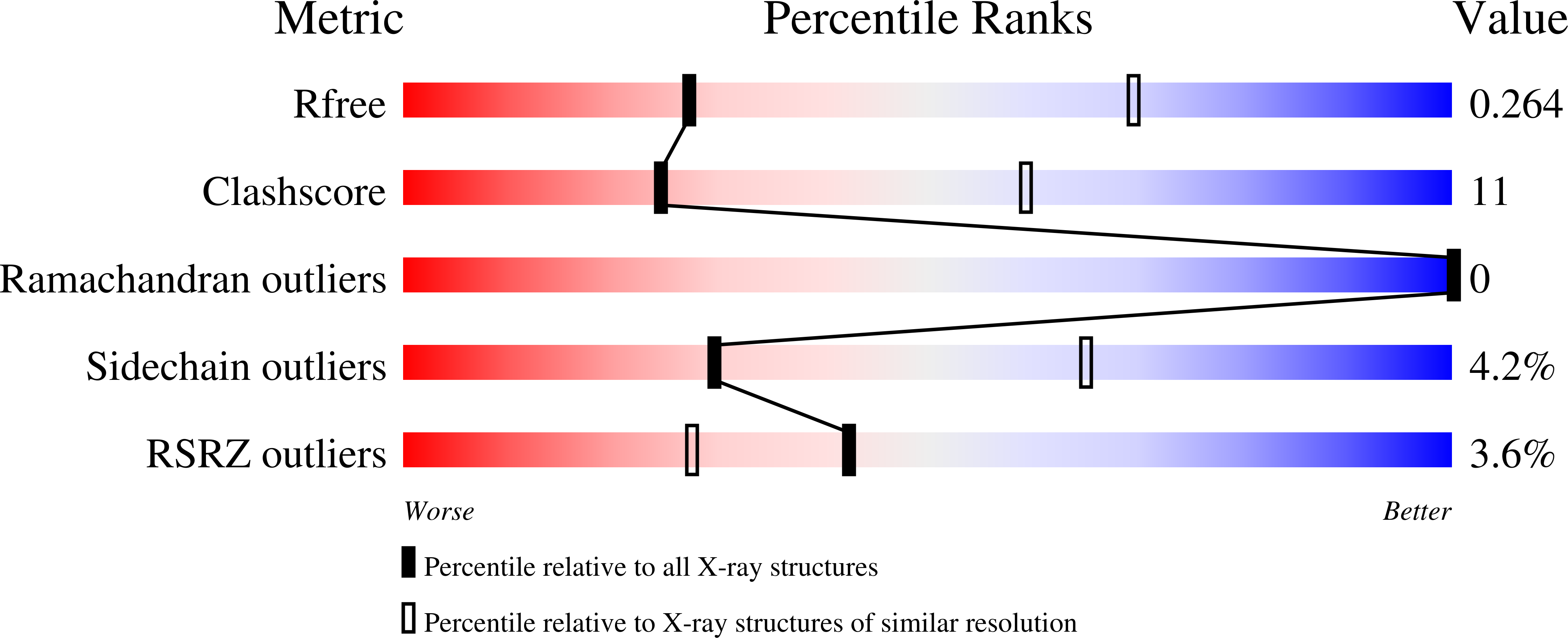Non-vesicular trafficking by a ceramide-1-phosphate transfer protein regulates eicosanoids.
Simanshu, D.K., Kamlekar, R.K., Wijesinghe, D.S., Zou, X., Zhai, X., Mishra, S.K., Molotkovsky, J.G., Malinina, L., Hinchcliffe, E.H., Chalfant, C.E., Brown, R.E., Patel, D.J.(2013) Nature 500: 463-467
- PubMed: 23863933
- DOI: https://doi.org/10.1038/nature12332
- Primary Citation of Related Structures:
4K80, 4K84, 4K85, 4K8N, 4KBR, 4KBS, 4KF6 - PubMed Abstract:
Phosphorylated sphingolipids ceramide-1-phosphate (C1P) and sphingosine-1-phosphate (S1P) have emerged as key regulators of cell growth, survival, migration and inflammation. C1P produced by ceramide kinase is an activator of group IVA cytosolic phospholipase A2α (cPLA2α), the rate-limiting releaser of arachidonic acid used for pro-inflammatory eicosanoid production, which contributes to disease pathogenesis in asthma or airway hyper-responsiveness, cancer, atherosclerosis and thrombosis. To modulate eicosanoid action and avoid the damaging effects of chronic inflammation, cells require efficient targeting, trafficking and presentation of C1P to specific cellular sites. Vesicular trafficking is likely but non-vesicular mechanisms for C1P sensing, transfer and presentation remain unexplored. Moreover, the molecular basis for selective recognition and binding among signalling lipids with phosphate headgroups, namely C1P, phosphatidic acid or their lyso-derivatives, remains unclear. Here, a ubiquitously expressed lipid transfer protein, human GLTPD1, named here CPTP, is shown to specifically transfer C1P between membranes. Crystal structures establish C1P binding through a novel surface-localized, phosphate headgroup recognition centre connected to an interior hydrophobic pocket that adaptively expands to ensheath differing-length lipid chains using a cleft-like gating mechanism. The two-layer, α-helically-dominated 'sandwich' topology identifies CPTP as the prototype for a new glycolipid transfer protein fold subfamily. CPTP resides in the cell cytosol but associates with the trans-Golgi network, nucleus and plasma membrane. RNA interference-induced CPTP depletion elevates C1P steady-state levels and alters Golgi cisternae stack morphology. The resulting C1P decrease in plasma membranes and increase in the Golgi complex stimulates cPLA2α release of arachidonic acid, triggering pro-inflammatory eicosanoid generation.
Organizational Affiliation:
Structural Biology Program, Memorial Sloan-Kettering Cancer Center, New York, New York 10065, USA.
























